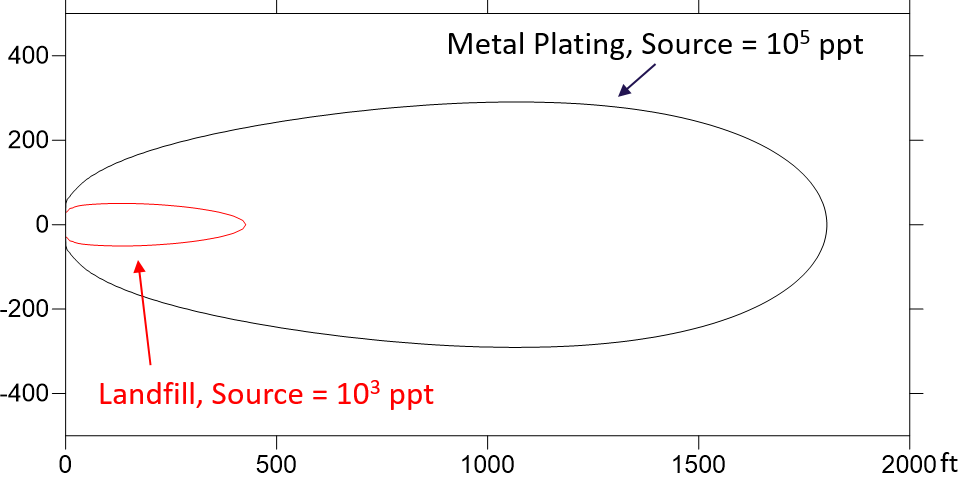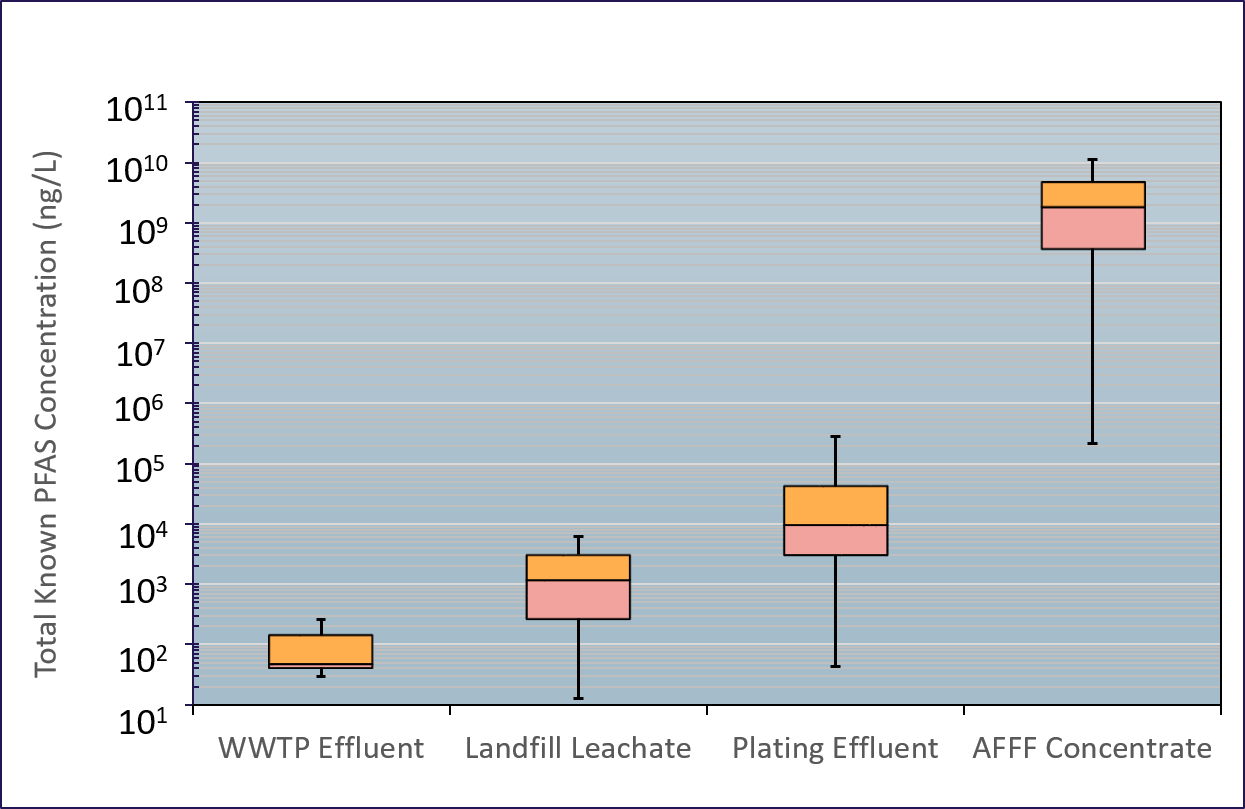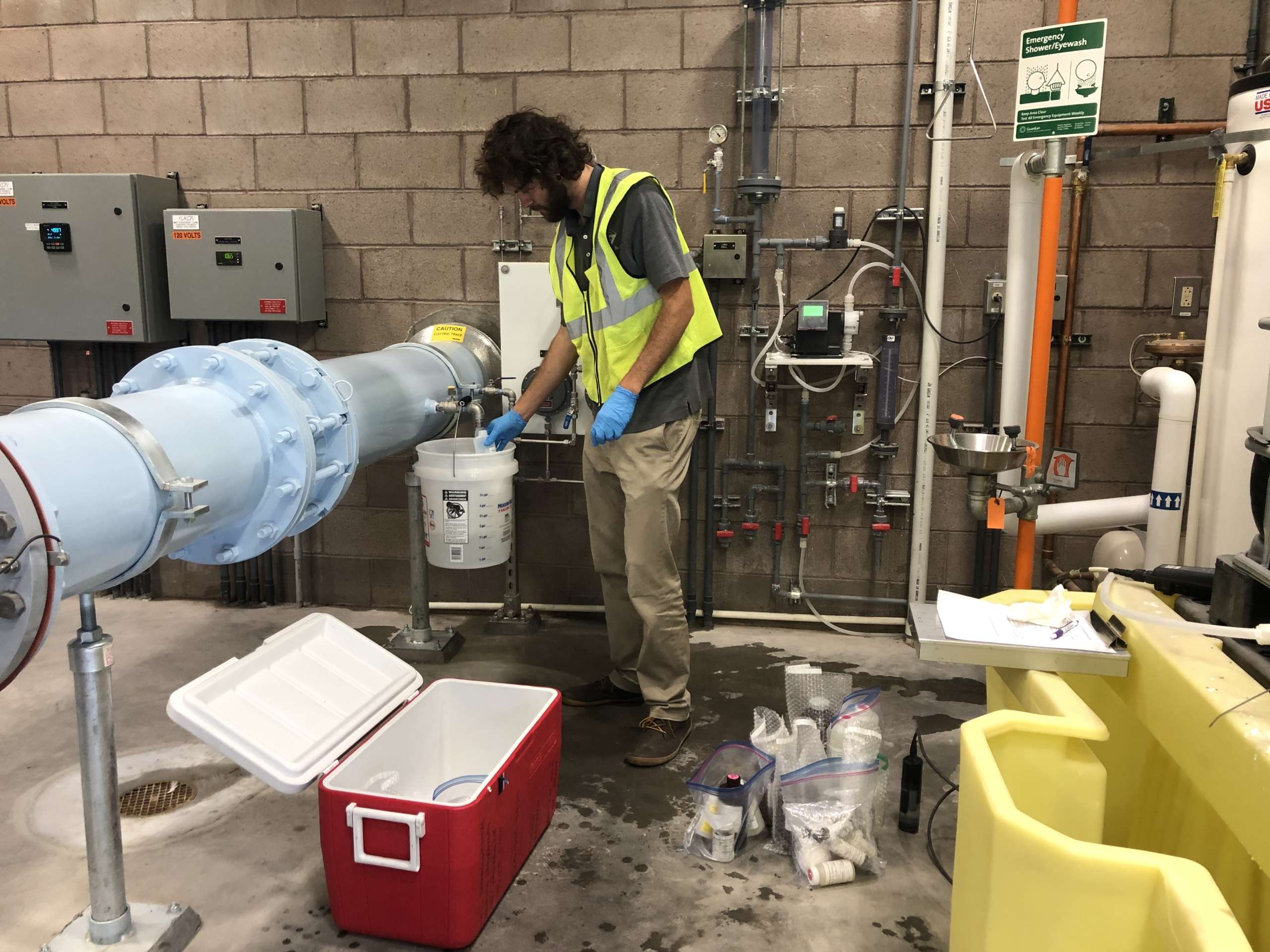
PFAS Expertise
GLA’s scientific experts and environmental professionals have experience in conducting poly- and perfluoroalkyl substances (PFAS) investigations, from field investigations to fate and transport modeling. By quantitatively and systematically determining the extent of PFAS impacts to soils, groundwater, and sediment, our team can help clients to select a PFAS remedy that reduces risks to the environment and human health.
Since our first PFAS investigation in 2002, GLA staff has supported PFAS investigations in Arizona, California, Colorado, Maine, Michigan, New Mexico, and West Virginia. We have supported multiple municipalities in delineating PFAS contamination and provided expertise in support of litigation on numerous PFAS matters. Our staff are members of the National Groundwater Association (NGWA) PFAS Working Group and have presented on PFAS forensics methodology to audiences from the American Groundwater Trust (AGWT), Law Seminars International (LSI), and NGWA.
About PFAS
First developed in the early 1940s, PFAS are a large group of manmade organofluorine compounds (>5,000) whose chemical structure gives them unique properties, including the ability to reduce friction and make products more resistant to stains, grease, water, and temperature. These chemical properties make them useful components in a wide array of industrial and commercial products such as textiles and leather products, metal plating, the photographic industry, photolithography, semi-conductors, paper and packaging, coating additives, non-stick cookware, food packaging, waterproof clothing, fabric stain protectors, lubricants, cleaning products, pesticides, paints, and aqueous film-forming foams (AFFF) used in firefighting.
Although there are thousands of PFAS compounds, certain PFAS have received particular regulatory attention. These key PFAS compounds are differentiated by the number of carbon atoms in the molecule and the presence of either a sulfonate or carboxylate functional group.
Early regulatory attention: Perfluorooctane sulfonate (PFOS) and Perfluorooctane carboxylante (PFOA)
Current regulatory attention in several states: PFHxS, PFBS, PFNA, PFHpA, PFDS, PFNS, PFHpS, PFPeS, PFTeDA, PFTrDA, PFDoA, PFUnA, PFDA, PFHxA, PFPeA, PFBA
Increasing and future attention: Fluorotelomers and all other PFAS
Among the sources of PFAS to the environment are: waste-water treatment plant effluent, biosolids, septic systems, landfill leachate, metal plating facility effluent, ski wax, PFAS production facilities, and AFFF. GLA has characterized the chemical signature and total concentration of PFAS expected from these various sources, which vary significantly.
Because of the highly stable carbon-fluorine bond, PFAS are extremely persistent in environmental media. PFAS exhibit moderate sorption to soils and sediments dependent on the individual compound properties, and are resistant to environmental degradation processes. Typically, PFAS have low volatility, but can adsorb to particles and be transported long distances in air. Since rates of transport differ between different PFAS, the distribution of various PFAS compounds will change from the source release to a distant receptor (e.g., groundwater production well).
In May 2016, the USEPA issued lifetime drinking water health advisories (HAs) for perfluorooctanesulfonic acid (PFOS) and perfluorooctanoic acid (PFOA) of 70 nanograms per liter (ng/L), which applies to PFOS and PFOA individually or in combination. In February 2020, USEPA announced a proposal to regulate PFOS and PFOA under the Safe Drinking Water Act (which would result in a federal maximum contaminant level [MCL]) and requesting information and data on other PFAS substances.
To regulate PFAS, several states have also taken action. Examples include:
- California has established notification levels of 6.5 and 5.1 ng/L for PFOS and PFOA in drinking water, respectively, and response levels of 40 and 10 ppt for PFOS and PFOA.
- Michigan has established MCLs for seven PFAS, including an MCL of 16 and 8 ng/L for PFOS and PFOA, respectively.
- The New Mexico Environment Department (NMED) has established preliminary soil screening levels (SSLs) for PFOA, PFOS, and perfluorohexanesulfonic acid (PFHxS) in residential, industrial, and construction worker exposure scenarios at 1.56, 2.60, and 7.08 milligrams per kilogram, respectively. NMED has also established a preliminary screening level for these three PFAS compounds in tap water at 70 ng/L. This preliminary screening level applies to each compound individually or in combination.

Comparison of a hypothetical PFAS groundwater plume (to 70 ng/L) associated with a metal plating source in comparison to a landfill leachate source.

GLA has characterized the chemical signature and total concentration of PFAS expected from multiple sources, which vary significantly. This box-whisker plot shows the expected range of total known PFAS from multiple types of sources.

PFAS Project Experience
- As the environmental consultants to Republic Services Inc. in California, the GLA team worked with Republic’s PFAS sampling consultant to comply with an order from state regulators to test all of their landfills for PFAS. GLA team members reviewed the consultant work plans to ensure that the information presented accurately described the landfill and was consistent with our direct site knowledge.
- To evaluate the potential impacts on groundwater quality of the proposed Tucson, Arizona, Southeast Houghton Area Recharge Project (SHARP), the GLA team developed and applied a contaminant transport model. The goal was to predict the future concentrations of PFAS in groundwater as a result of recharging the treated wastewater containing low level concentrations of PFAS. In addition, the model was used to predict the distance that PFAS would migrate in the aquifer, particularly with respect to any nearby potable supply wells.
- GLA team members investigated of the presence of PFAS in the area in and around the Tucson International Airport (TIA), the Air National Guard training facility, and Davis-Monthan Air Force Base, as part of the Tucson Airport Remediation Project (TARP). The GLA team identified areas lacking PFAS information and conducted a well inventory to find wells to target for delineation of the plume.
- GLA affiliates are performing characterization and monitoring of PFAS on behalf of the NMED to determine the extent of PFAS impacts to surface water and groundwater at separate project areas in the vicinity of Cannon Air Force Base in Curry County and Holloman Air Force Base in Otero County, New Mexico. NMED will be able to select a clean-up remedy that reduces risks to human health and the environment upon completion. Read more on the NMED website.
- GLA provided technical support in defense of the public service district in a West Virginia for an environmental litigation case involving contamination of a well field by a surfactant chemical (ammonium perfluorooctanoate ([APFO], the ammonia salt of PFOA). Project tasks included prediction of past and future surfactant concentrations at the well field; evaluation of surfactant migration pathways from the release point, including groundwater, vadose zone, surface water, and atmospheric pathways; and evaluation of the cost and feasibility of remediation.
- On behalf of a Class-Action group related to PFAS contamination from an industrial landfill in the Midwest, GLA employed forensic methods to differentiate PFAS source(s) from an industrial landfill, former wastewater treatment plant, plating facility and industrial facility. Our analysis depended on evaluating operational history associated with multiple facilities, aerial photography, PFAS occurrence and chemical signatures at groundwater monitoring and production wells, groundwater flow direction, previously-developed wellhead protection area mapping, and lithologic heterogeneity in the vicinity of a large river channel facilitating rapid groundwater transport.
- GLA collected water quality samples during recharge project demonstration testing for the Albuquerque Bernalillo County Water Utility Authority, including sampling for PFAS in the source water (treated surface water) and from the aquifer storage and recovery (ASR) well. GLA employed specialized groundwater sampling protocols when collecting the PFAS samples to avoid cross-contamination. All results from both samples were non-detect, validating the sampling methodology and strict compliance with protocols in place during sampling events.
- The GLA team was asked to participate in regulator/stakeholder meetings to create a special regulatory district that includes the Fountain/Widefield aquifer, in the vicinity of Colorado Springs, during the rulemaking process. The purpose of the regulatory district was to establish a regulatory standard for PFAS compounds within a limited geographic area, to obtain priority Department of Defense funding for groundwater remediation at the likely source of local PFAS contamination, Peterson Air Force Base. Our client, Republic Services, asked us to participate in meetings, and document the details of the rulemaking process, and evaluate potential impacts on Republic’s Fountain Landfill and other Colorado landfills.
